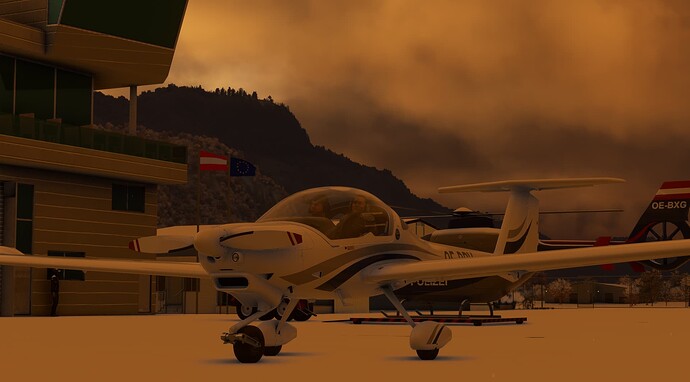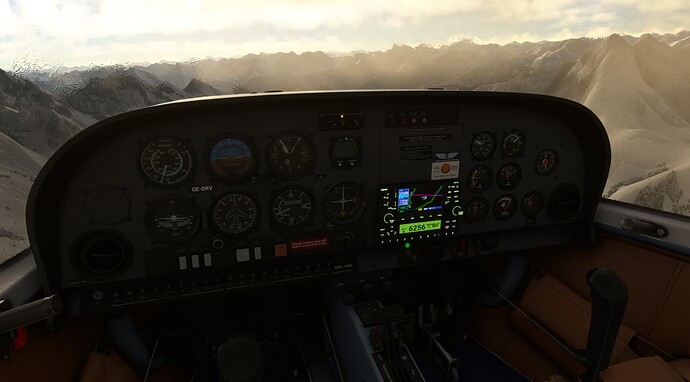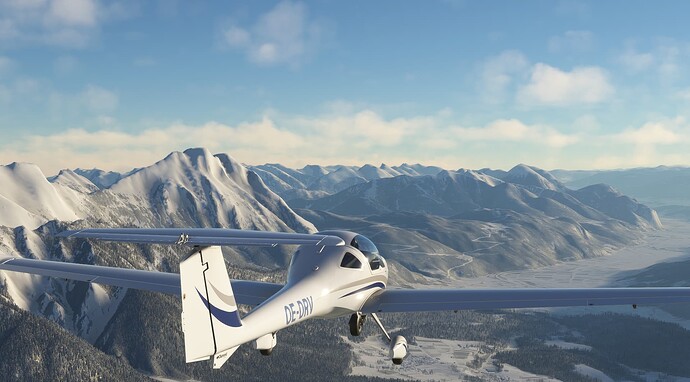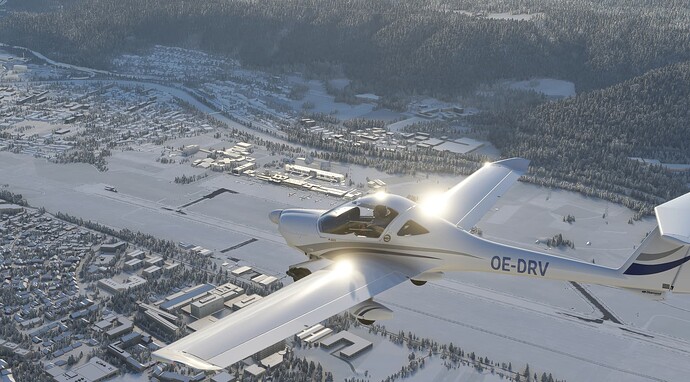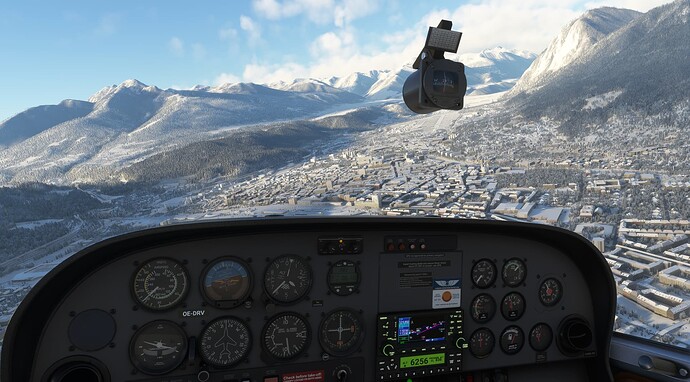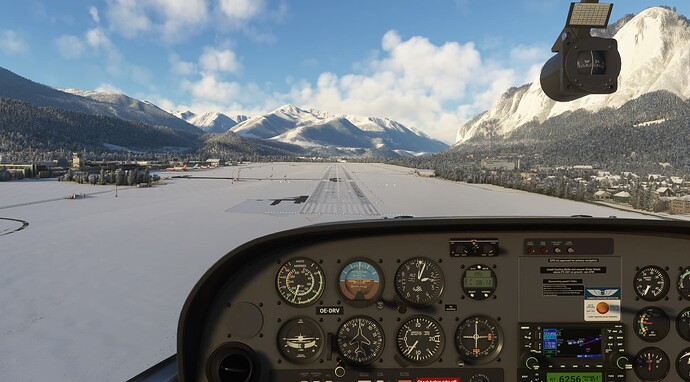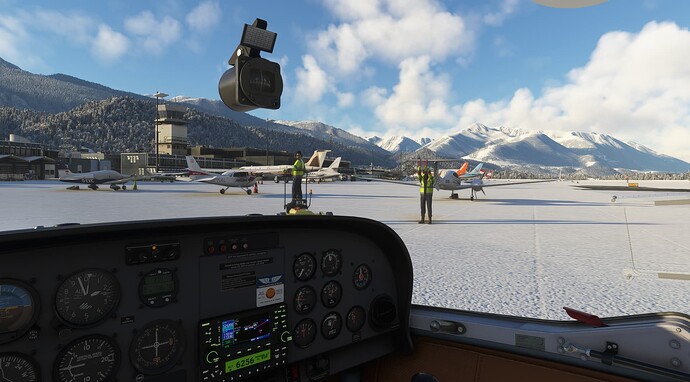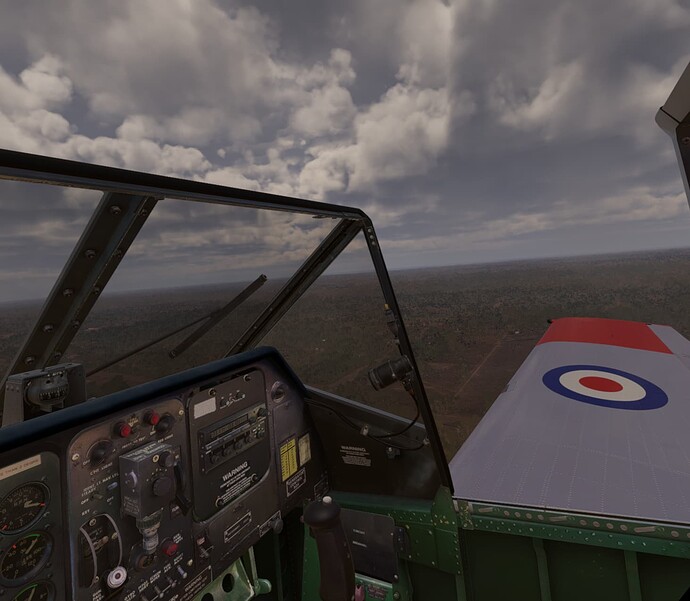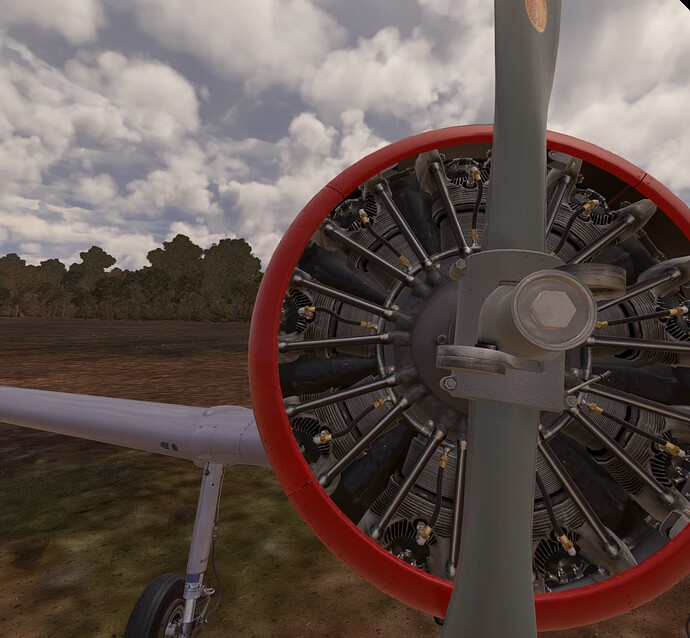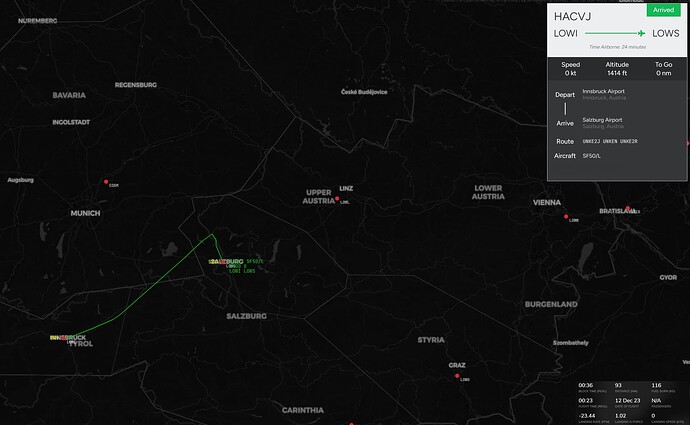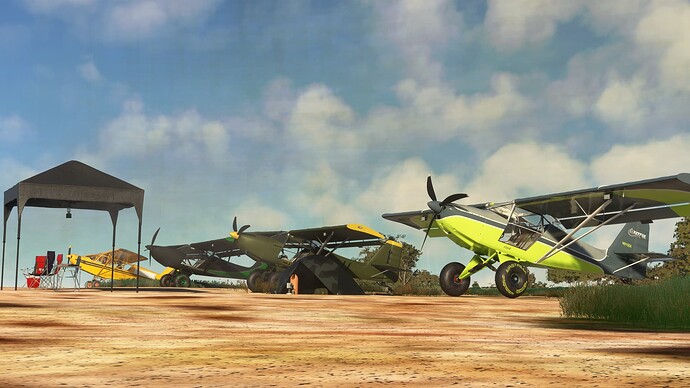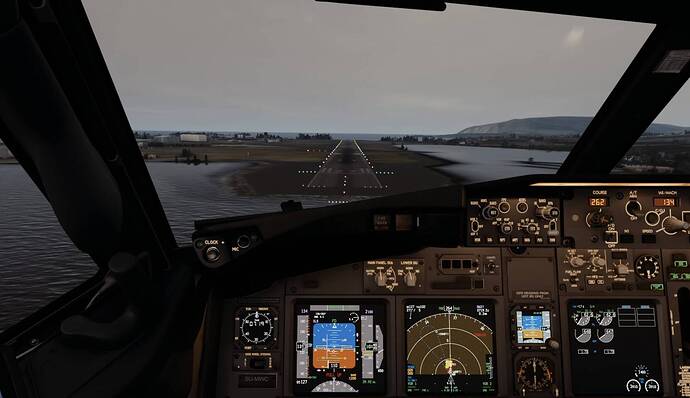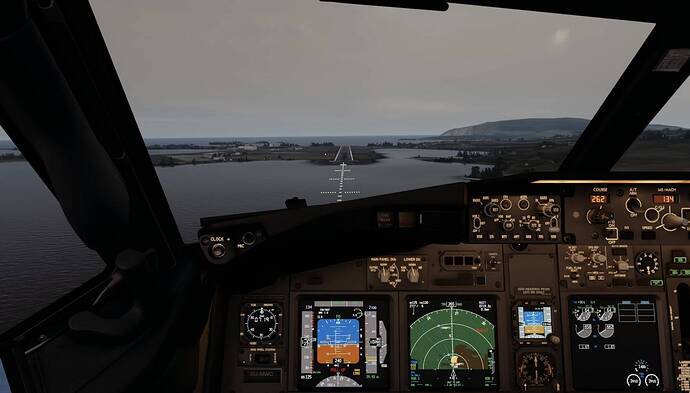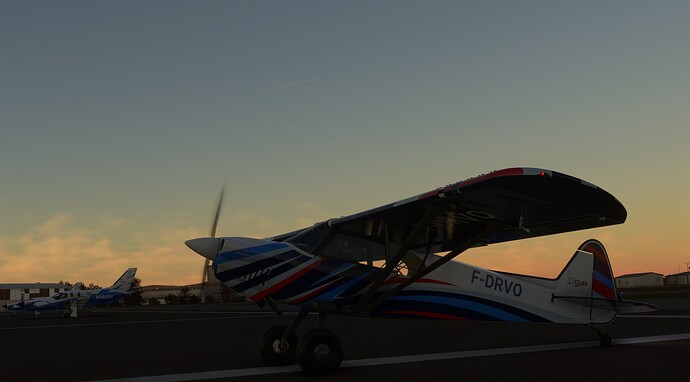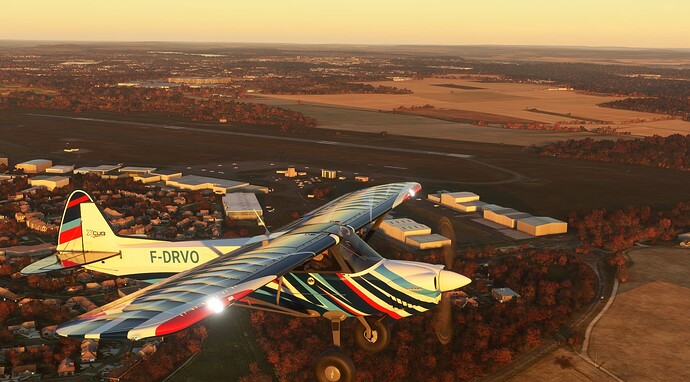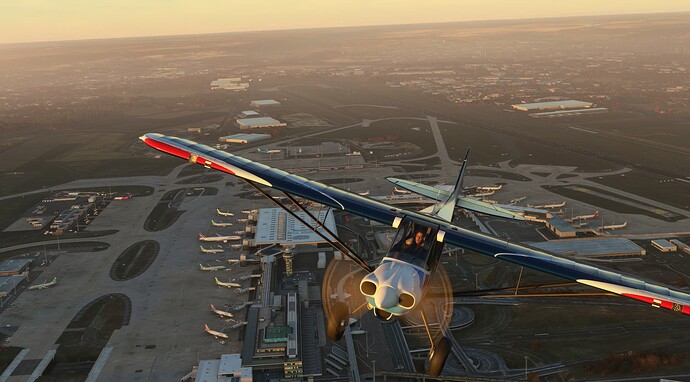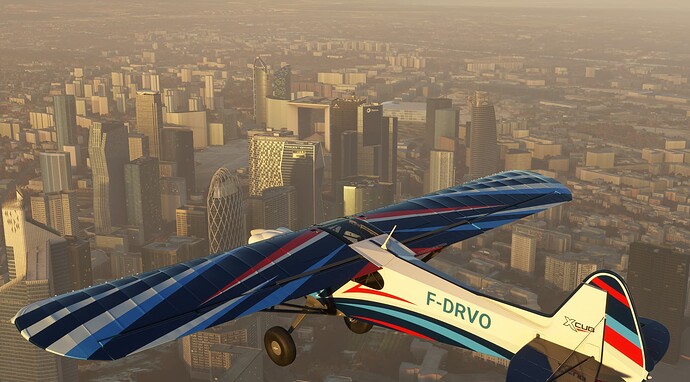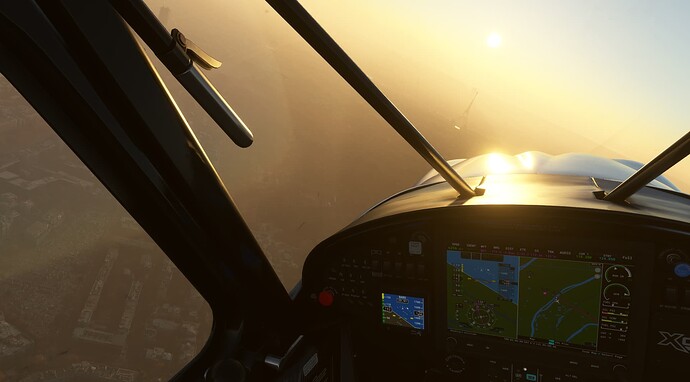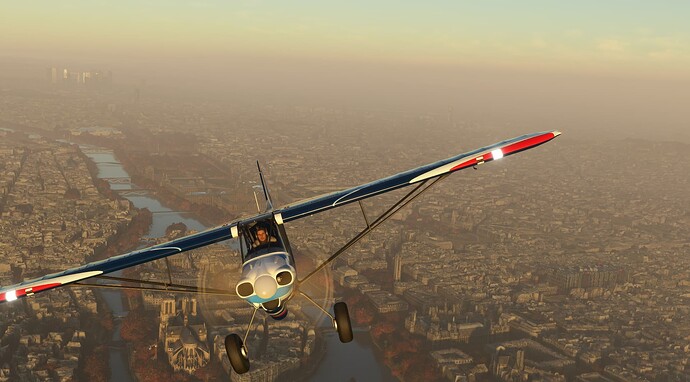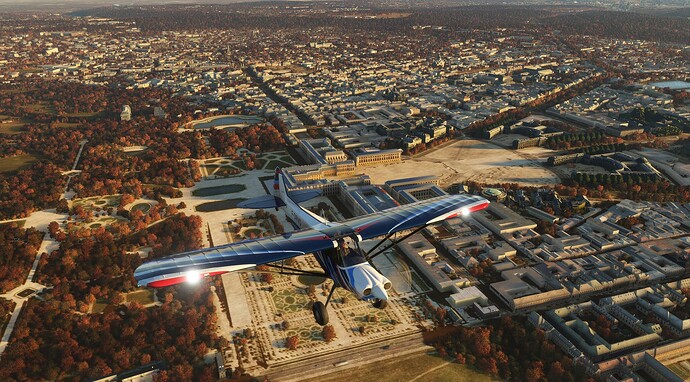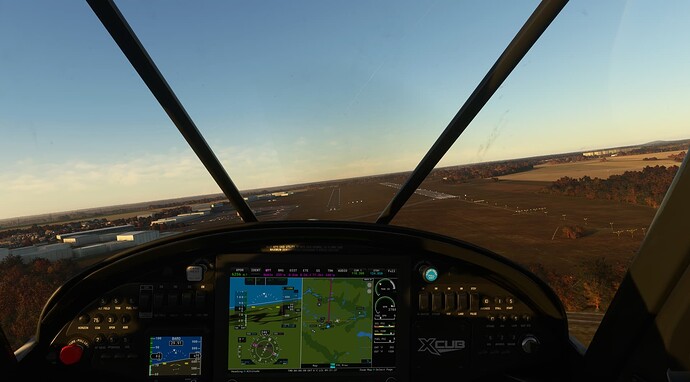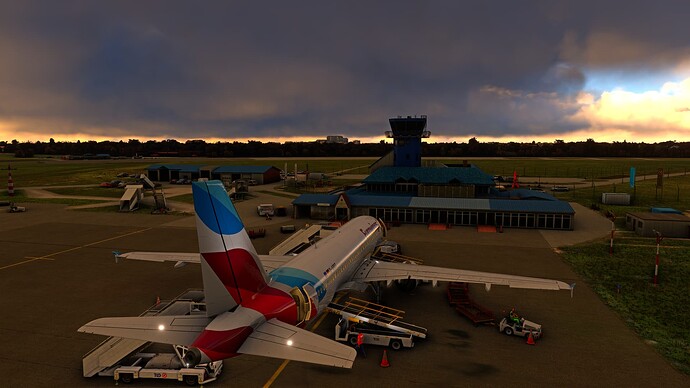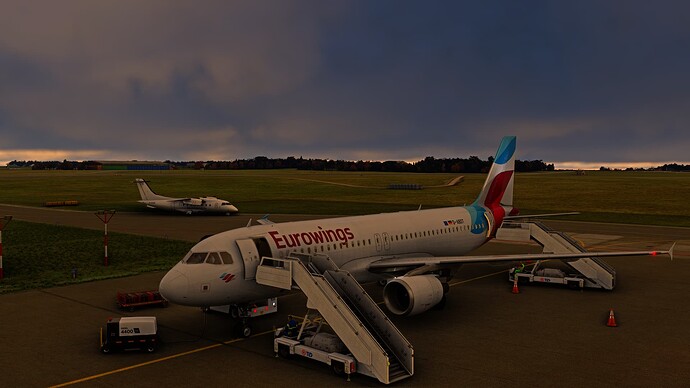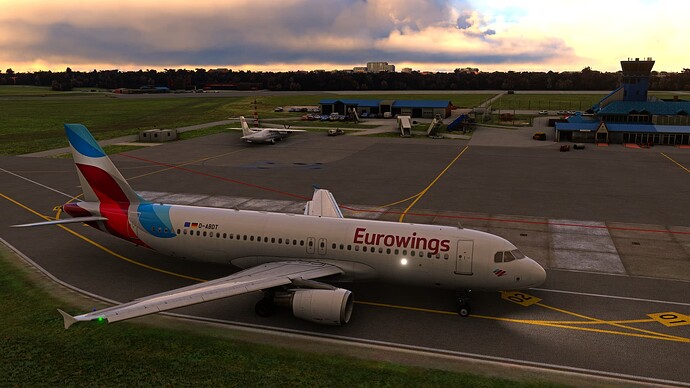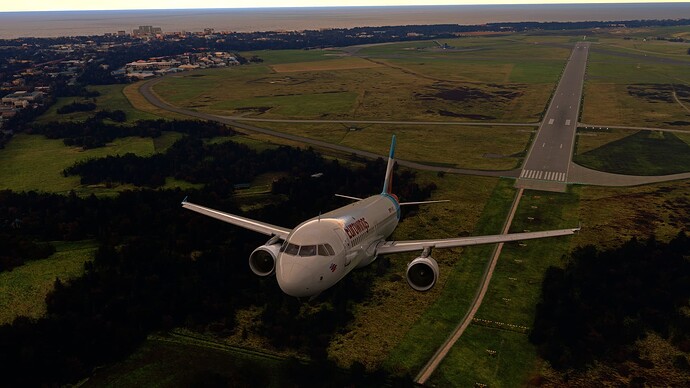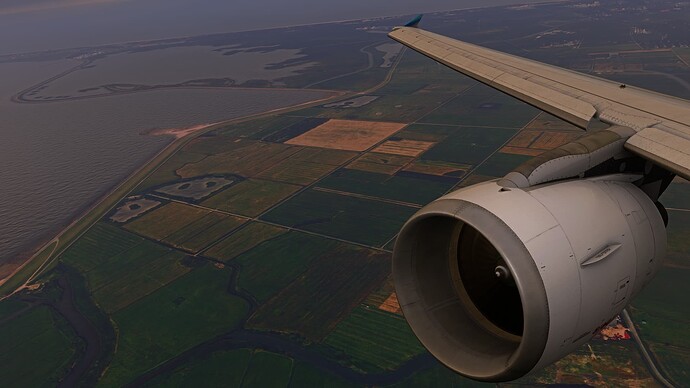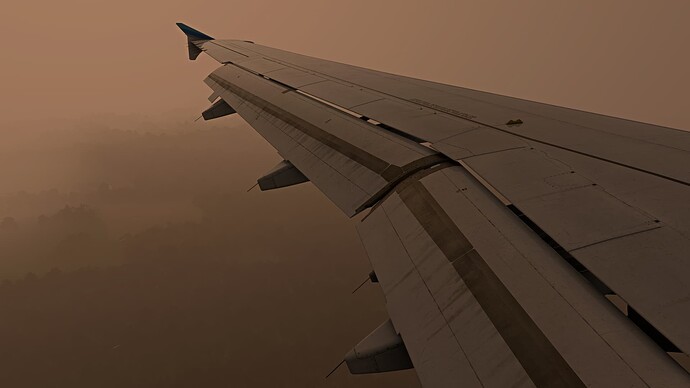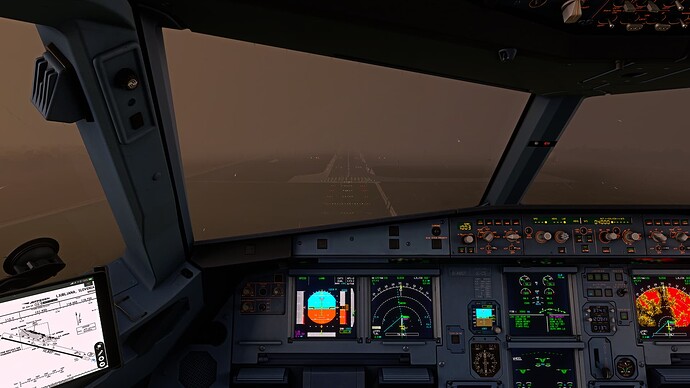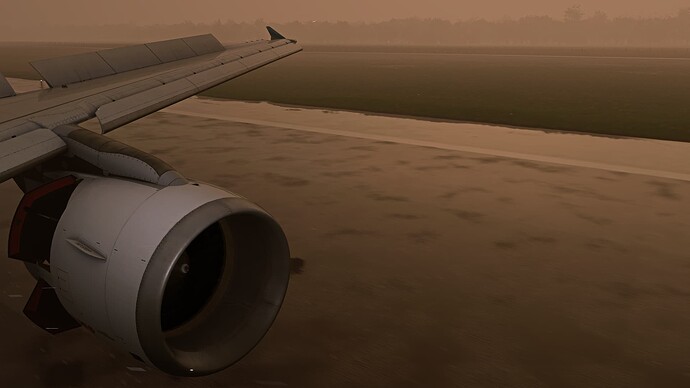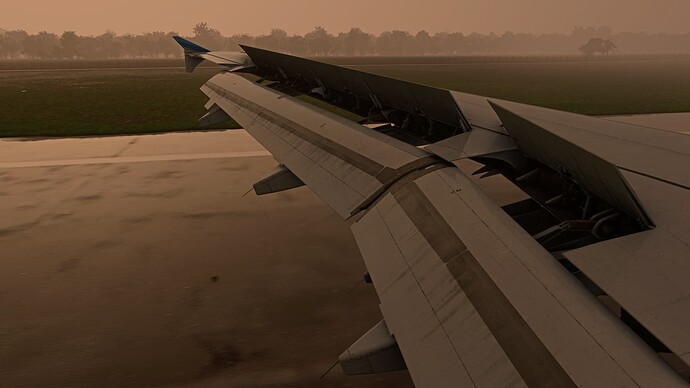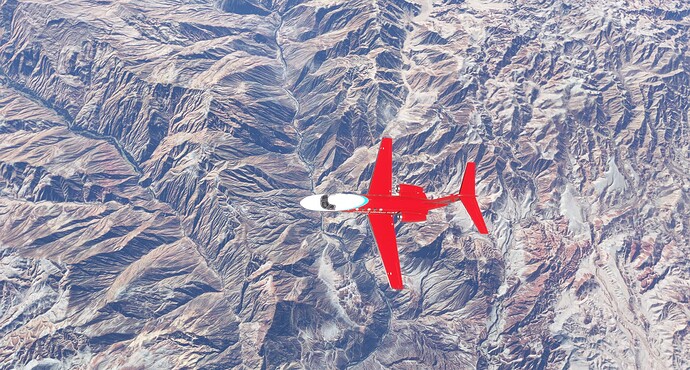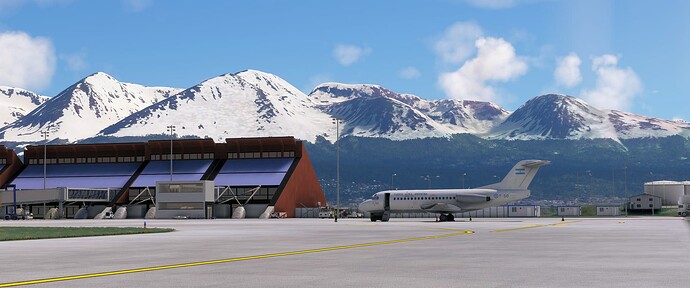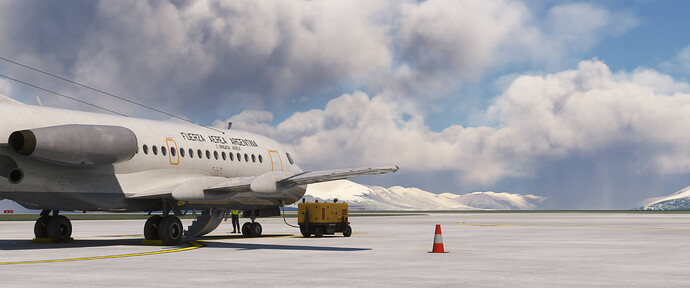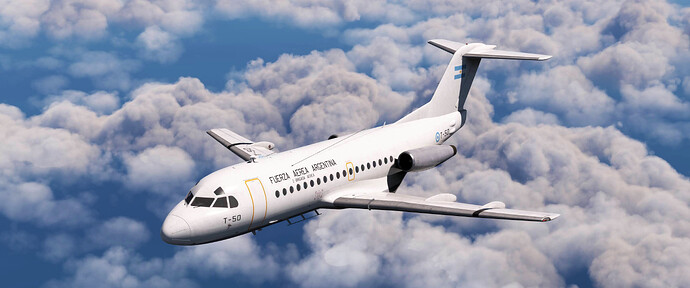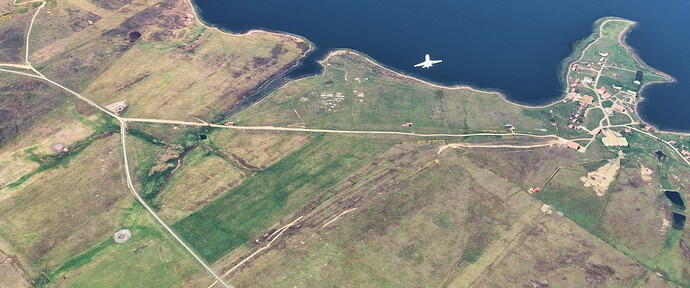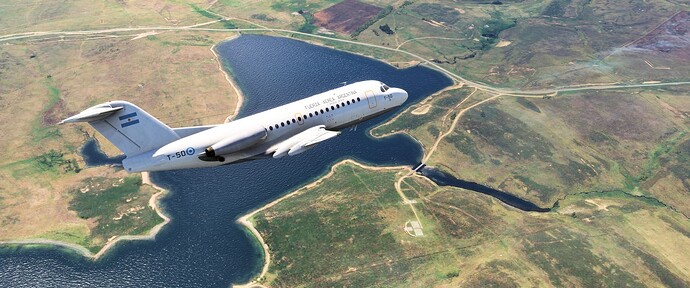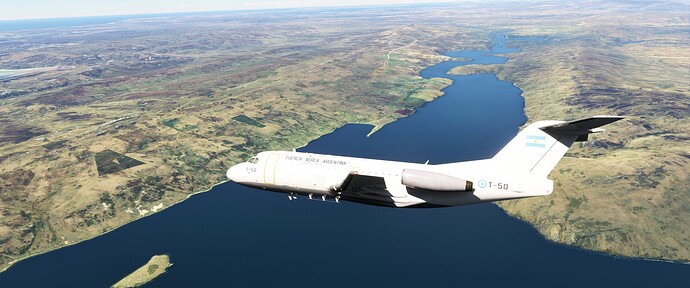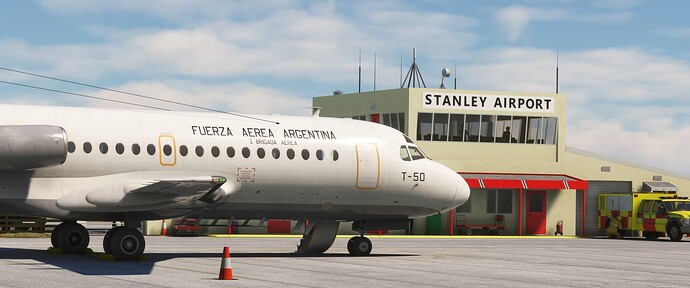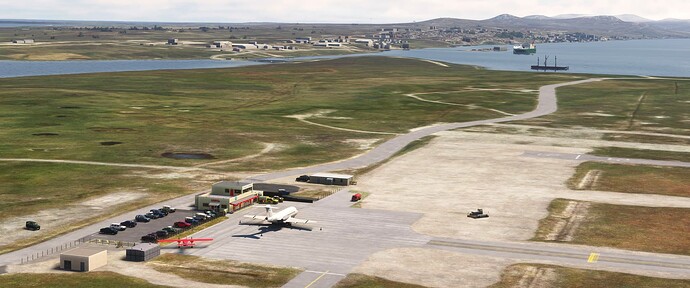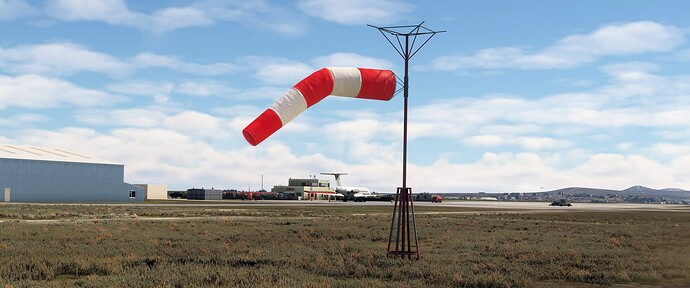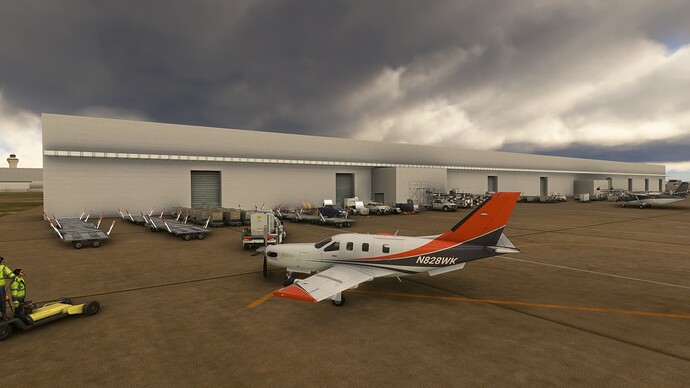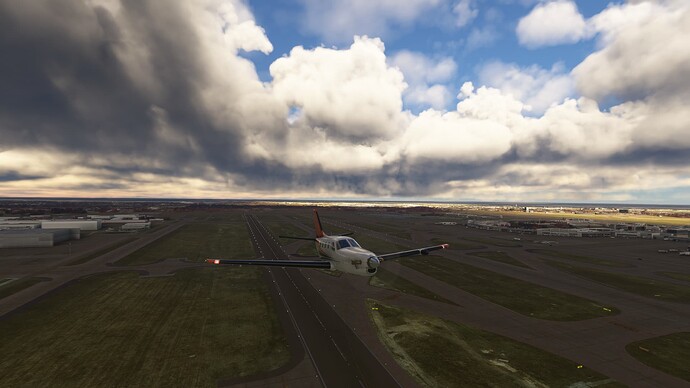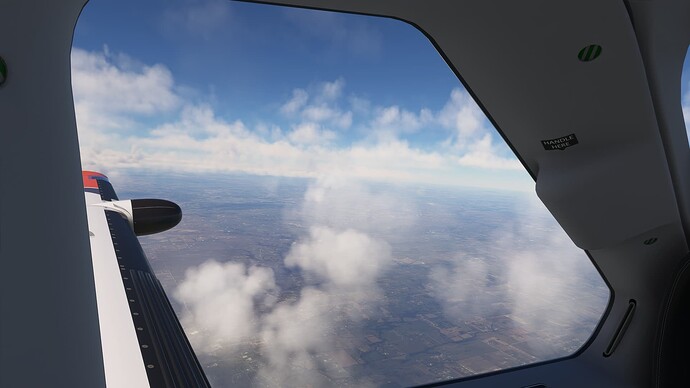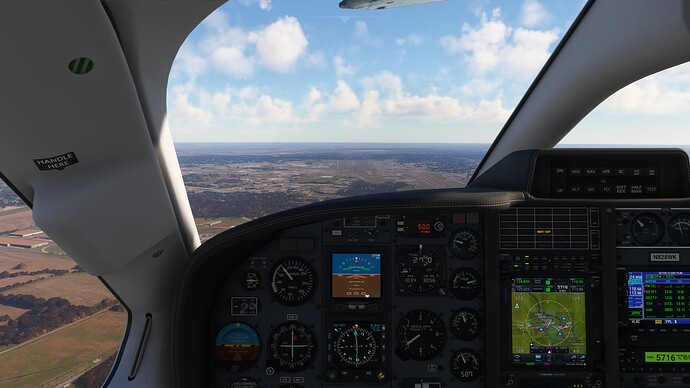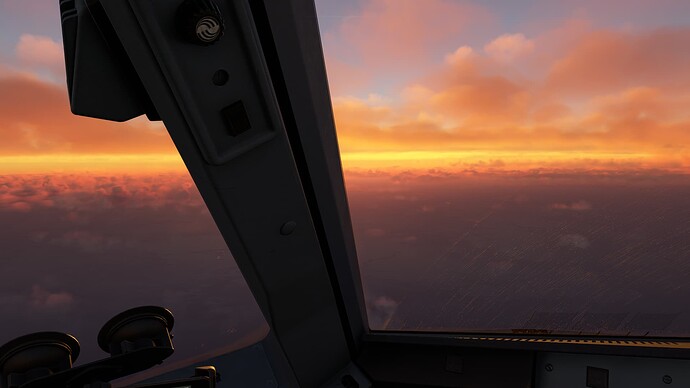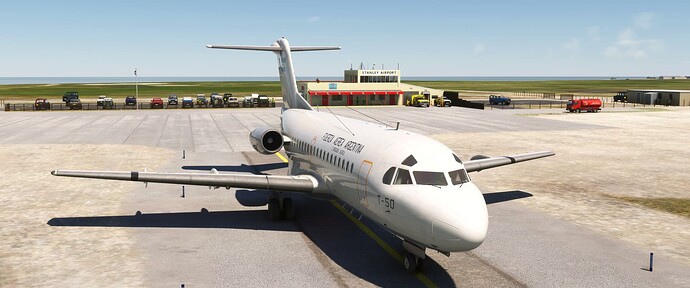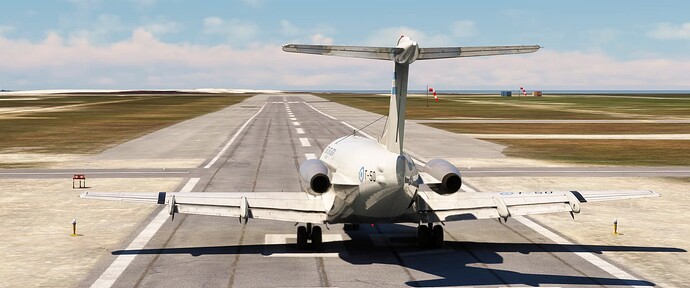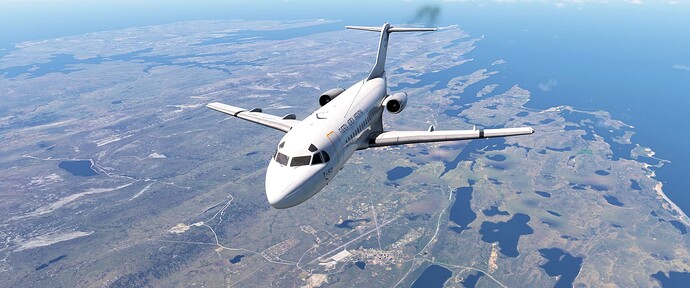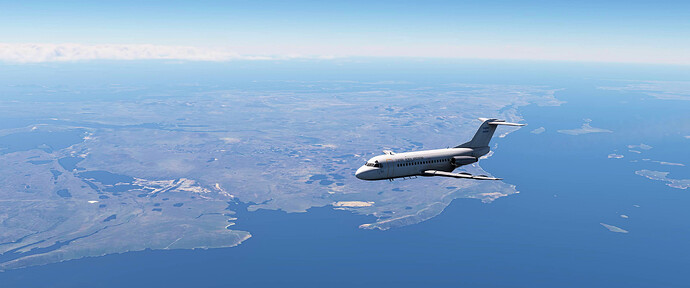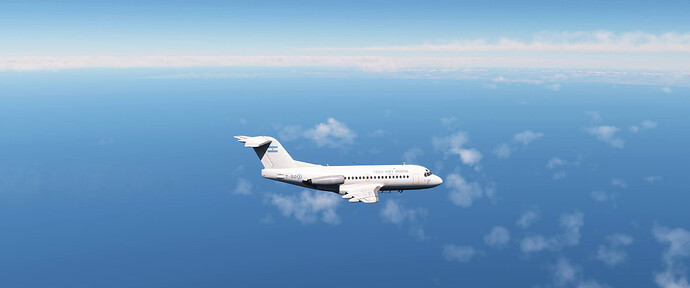If you need more f28 routes US Air operated the Fokker 28 out of Pittsburgh after their merger with Allegheny airlines with their awesome fleet too bad no one’s doing a Mohawk 298 to fly more Allegheny Airlines routes
I actually had to look that one up…
looks kinda like the Short 360’s prettier cousin ![]()
First snowy flight (well on the ground anyway), Dornbirn to Innsbruck in my continuing ‘Sim-plane-I’ve-not-yet-flown-since-I-started-three-years-ago’ series. DV-20 proved a slow climber, maybe the weather, but I circled a bit to get over the mountains.
You should have just given him this:

Picked up the Ant’s Airplanes Winjeel, and wow, just wow. Where do I even begin? Well, how about in Darwin, Australia?
Super nice handling characteristics, and different modes of difficulty for operation (I’ll move up from “easy” later, I promise).
You can keep the canopy open if you like the virtual wind in your hair (and if you ignore the placard instructing you to lock the canopy and keep it closed during flight). Great fun doing touch and go’s at nearby Emkaytee, I especially liked the ground handling upon takeoff and landing, very good feeling.
Winjeel offers 9 cylinders, for your propelling pleasure.
All in all a really superb offering from Ant’s Airplanes, I will be spending lots of quality time in this plane. She offers a superb vibe, really natural and fun handling characteristics like her cousin the Tiger Moth. Kicked off one of the most incredible spins I’ve ever experienced in a sim. Absolutely amazing sound effects. Welp, back to down under. Cheers!!
I gave a nice wash to the Vision Jet from Innsbruck (LOWI) to Salzburg (LOWS):
I might have activated approach mode too late and the plane did not capture the glideslope, I realised it too late and needed a pretty steep dive to compensate. But in the end I managed to put her down quite allright.
Full video later here:
Had a nice and steady approach into Sumburgh but suddenly the ILS went all over the place…
-Bram
SkyLane
The Cub X is a nice GA sightseer/commuter. Another craft in my ‘Sim-plane-I’ve-not-yet-flown-since-I-started-three-years-ago’ series. This is actually a redo as the day before I flew it in monster rain and overcast, so not much to see of Paris. This was just a quick loop from Toussus-le-Noble to Le Bourget and back again.
Nice livery: which one is it? I can’t find it on Flightsim.to ![]()
Two flights today, again in the Fokker 28 (nope, not tired of her yet ![]() ). I’ll preface this tale by saying that these flights have the potential to ignite arguments, so let’s all agree to keep politics out of my sightseeing. Thanks!
). I’ll preface this tale by saying that these flights have the potential to ignite arguments, so let’s all agree to keep politics out of my sightseeing. Thanks! ![]()
I downloaded three scenery packs from flightsim.to: Argentina Airports Pack by Brainshot, Ushuaia airport by Ckah991, and Port Stanley airport by SuperSpud. While I was there, I grabbed the fantastic low-visibility FAA F-28C repaints by DelPlataDesign, although I didn’t end up using them today.
Instead I loaded up F-28-1000 T-50, one of the aircraft included in the Just Flight package, and headed for Ushuaia, the capital of Argentina’s Tierra del Fuego and the southernmost city in the world. All around this beautiful airport, majestic snowcapped peaks overlook deep, narrow waterways. I had no idea scenery like this existed outside Austria, Alaska, or possibly Norway!
Our mission today is to transport environmental and wildlife researchers and their equipment from Ushuaia to Port Stanley. Flight time will be approximately 90 minutes. While F-28s flew into Port Stanley before the war, the runway there has decayed considerably since then, and it’s PCN limit is now unsuitable for sustained operations by the Fokker. Thankfully, with some greasing of wheels and exchanging of appropriately alcoholic “gift baskets,” we received permission to land at Stanley, as long as our weight is limitied to 55,000 pounds (25,000 kilograms), we remain on the strengthened pavement portions only and do not execute any “locked wheel” turns. (The fact that the runway is barely 2,400 feet/1,100 meters long and 60 feet/18 meters wide may be the least of my worries!)
(Blimey! The weather moved in while I was sitting here talking! We’d better go ![]() )
)
T-50 (msn 11048) first flew in March 1972 and spent a few years as the Fairchild demonstrator in North America before starting her working life in 1974 with Aviateca and Aerolineas Argentinas. She was purchased by the Argentine government in 1977 and eventually joined the FAA in the mid-2000s. She’s retired now, but still flies in MSFS!
I flew this flight with ATC, and it worked much better than before. The weather over the Falklands/Malvinas was supposed to be mostly clear, but as I approached West Falkland at FL310, an overcast layer obscured much of the archipelago. Worse, a greater-than-expected tailwind meant I would arrive at Stanley significantly overweight. I elected to descend early and do some sightseeing around the island. (This was really the whole purpose of this flight. Bear with me ![]() )
)
I broke out a few thousand feet over the waters of Falkland Sound, the waterway separating the two major landmasses that form the Falklands/Malvinas. Seeing “Bomb Alley” ahead was like seeing the battlegrounds of Gettysburg or the Normandy beachheads. West Falkland is on the left, with East Falkland, Goose Green, and San Carlos ahead.
3,500 feet over Goose Green, turning north. The turf airfield from which Argentine Pucaras operated is visible behind T-50 betwen the two roadways. Elements of British 2 Para assaulted the town from the left on May 28, 1982. After a night of terrible fighting, the Argentine garrison surrendered. The grave of Lt. Col. Herbert Jones, commander of 2 Para and posthumous recipient of the Victoria Cross, is unfortunately just out of the bottom of the frame, but is visible in the sim. Also, if you want to read about an outstanding platoon leader, look up Lt. Roberto Estevez, who was posthumously awarded the La Nación Argentina Al Heroico Valor En Combate (Argentine Nation to the Heroic Valour in Combat Cross) after bravely leading his troops here.
North of Goose Green, overhead the Cementerio de Darwin (Darwin Cemetary) in which 236 Argentine soldiers rest. You can read more about it at Wikipedia. The 2 Para memorial is on the opposite shore, out of view to the left, and is unfortunately barely discernable in the sim.
Here we’re approaching San Carlos from the southeast. This is where the British fleet landed elements of the Royal Army and Marines, and fought a pitched battle with the Fuerza Aérea Argentina (FAA - Argentine Air Force) and Comando de la Aviación Naval Argentina (COAN - Argentine Naval Aviation Command), the first sustained combat between ships and aircraft since World War II. San Carlos lies across the low ridgeline at right. To our left is Grantham Sound, where HMS Ardent was sunk by FAA and COAN Skyhawks on May 22. The fleet would have been moored in Falkland Sound ahead, outside of San Carlos, with aircraft attacking from over the hills along West Falkland’s eastern shore, visible in the distance. HMS Ardent and Antelope, and numerous FAA, COAN, and Royal Army aircraft were lost here.
Overhead Port San Carlos where the British landed in late May 1982, and nearby where FAA Lieutenant Owen Crippa single-handedly attacked the arriving British fleet in his Aermacchi MB.339 combat trainer. Nobody can possibly say the Argentine pilots weren’t equally capable and brave! There’s a brief account with an excellent painting of the moment at maritimeprints.com.
(Edit: I had a photo of Fitzroy and Bluff Cove here before, with a discussion of the attack on RFAs Sir Tristram and Sir Galahad. Unfortunately, I realized afterwards that my photo was of the incorrect location. I’ll try and fix it another time. Sorry for the confusion! ![]() )
)
Having now burned enough fuel to land at Stanley (while keeping enough to reach my alternate at Rio Grande), we’ve turned to the east to join the downwind leg to Runway 27. Port Stanley is in the distance above T-50 near the long sandy strip in the top right of the photo. The ruggged hills to the left are where the Argentine forces made their last stand against the approaching British, where the names Harriet, Longdon, and Tumbledown became notorious, and where the Gurkhas, Scots, and 3 Para rose to fame.
On short final to Runway 27 at Stanley. The original runway has been narrowed and shortened…significantly! This is the exact type of work for which the F-28 was designed. Getting in shouldn’t be a problem. Getting back out? Well, that’s another story (literally)!
Unloading at Stanley’s small terminal. Detailed information covering foreign airspace and airports, including operational information, limitations, and instrument approach charts, is usually available in the appropriate nation’s Aeronautical Information Publication (AIP), which can be located via Google Search. Here’s the links to Argentina and the Falklands/Malvinas for anyone who’s interested! If you need help deciphering any information, feel free to PM me! ![]()
Falkland Islands Government Air Service (FIGAS) is the major (only?) commercial passenger carrier in the Falklands/Malvinas. The airline began operations in 1948 with two Austers, and has operated Norsemen, Beavers, Islanders, and even a former Argentinian UH-1! You can read about this fascinating and vital airline at their website. Before the war, Argentine government-owned Líneas Aéreas del Estado (State Air Line) flew F-27s and F-28s between Stanley and the Argentine mainland.
In the distance is Stanley, the capital of the Falklands/Malvinas. Just offshore from the airport in Whalebone Cove lies the wreck of Lady Elizabeth, a merchant tall ship that broke her moorings and ran aground back in 1936, and from which SAS teams monitored the airfield and town during the war. SuperSpud included many great details in his scenery!
The gusting crosswind and narrow, short runway made this one of my most challenging landings ever. The Just Flight F-28 flies both well and realistically, making crosswind landings that much easier.
Well, this post is too long, so I’ll save the return flight for tomorrow. Thanks for sticking with me until the end. Hopefully you found this diatribe interesting and educational. There’s many good Internet sites that cover the Falklands War/Guerra de las Malvinas, both from the British and Argentinian viewpoints.
I encourage you to read both sides. Anyway, that’s all for now. Good night! ![]()
Enjoying a moment of clarity today, realising just how far the sim and simming experience has come for me since the initial release of MSFS in August 2020. It happened whilst on descent in the SWS PC-12 in SU14 with the smooth performance, the updated lighting palette at dusk, realistic real world weather turbulence off the mountains coupled with the PMS50 GTN750 navigation… just sublime ![]()
I do love reading this thread. I have quite the list of places to see!
Here’s the conclusion of my flying from yesterday. I’ll have to make this quick, since I have to leave for work this evening.
After some delay (hey, I have to eat ![]() ), our scientists from yesterday and additional members of their team already in Stanley boarded a refreshed and refueled T-50 bound for Rio Grande (SAWE) on the coast of Tiera del Fuego in Southern Argentina. I planned a more direct route over Mount Pleasant and Airway UW46, although with a forecast 40-knot headwind our flight time would be nearly equal to the outbound leg. To remain under our imposed 55,000 lb (25,000 kg) weight limit, I selected nearby Ushuaia as our alternate airport.
), our scientists from yesterday and additional members of their team already in Stanley boarded a refreshed and refueled T-50 bound for Rio Grande (SAWE) on the coast of Tiera del Fuego in Southern Argentina. I planned a more direct route over Mount Pleasant and Airway UW46, although with a forecast 40-knot headwind our flight time would be nearly equal to the outbound leg. To remain under our imposed 55,000 lb (25,000 kg) weight limit, I selected nearby Ushuaia as our alternate airport.
Here we are holding short of Runway 9 at Stanley. Taxiing a jet aircraft out of a confined ramp like Stanley is challenging. The Fokker requires breakaway thrust only slightly above idle, but that thrust is capable of doing real damage behind you. Judging your clearance is equally challenging since the Fokker’s turn radius is limited by the tailplane, not the wingtip (in other words, just because the wingtip clears an obstacle while turning, there’s no guarantee the stabilizer will clear as it swings by). If in doubt, stop and call a tug!
Oof, that’s short! This is one of those infrequent situations wherein we’ll be taking off on Runway 9 using part of the Runway 27 displaced threshold. Remember that portion of the runway isn’t usable for landing on 27 but is available for takeoff in both directions. Regardless, we’ll definitely be setting takeoff thrust prior to brake release! (Note that in SuperSpud’s scenery, there’s a considerable “bump” at the displaced threshold.)
Climbing westbound over East Falkland, with much of the 1982 warzone in view. Goose Green is located on the isthmus above and to the left of T-50. Grantham Sound is directly above her on the east side of Falkland Sound, while San Carlos is above and to the right. The level of desolation here is unbelievable! Also, I wish the weather yesterday had been like today!
Passing over RAF Mount Pleasant. Stanley Airport is just at the tip of T-50’s left stabilizer, with Fitzroy and Bluff Cove to the right of her left engine. On the left of the photo and above T-50’s right wingtip you can see Teal Inlet and the ground across which the British marched toward Stanley. RAF Mount Pleasant became operational in 1986, allowing No. 23 Squadron to relocate from Stanley. The squadron operated Phantom FGR.2s until replaced by Tornados in 1992. Today No. 905 Air Expeditionary Wing defends the island with four Typhoon FGR.4s and a single Voyager KC.2 (Airbus A330) tanker and A400M transport, while the Royal Army maintains a small air defense garrison here. (The basic scenery for Mount Pleasant is awful, so I chose Stanley for this whole trip! Sadly only today did I find Flak’s excellent scenery package for Mount Pleasant at flightsim.to. Now I’ll have to come back!)
Cruising at FL330 with West Falkland in the distance. Not much happened here during the war, although the Argentinian’s did occupy Pebble Island, visible directly above T-50 in the extreme distance. Not all was quiet here, though, as flights of A-4s and Daggers flew low over the island heading toward the British fleet in Falkland Sound and at San Carlos.
Descending into Rio Grande with the Isla de los Estados (Staten Island) in the distance. On May 2, 1982, Argentine cruiser ARA General Belgrano was torpedoed and sunk 90 nautical miles southeast of Isla de los Estados by HMS Conqueror. Operating under radio silence and in poor visibility, her escorts were initially unaware that anything had happened to the cruiser, which greatly delayed rescue. Belgrano’s sinking was the most controversial incident of the entire war, and discussion (arguments) regarding both the necessity and merits of the attack are still debated today.
Final approach into Rio Grande. I requested vectors to the ILS approach course from MSFS ATC, which summarily ignored me, so I self-vectored again. This area is mostly flat agricultural land, although you can spy the mountains surrounding Ushuaia in the distance. In 1982 Rio Grande airport was Naval Air Station Almirante Quijada and hosted Daggers, Skyhawks, Super Etendards, and Neptunes of both the COAN and FAA. The Etendards that sank HMS Sheffield and Atlantic Conveyor were based here.
On the naval ramp at Rio Grande. Looking at the terminal, it’s apparent that this airport, part of a package of 35 Argentine airports, suffers from some terraforming issues! ![]()
Alright, I think that’s it. It’s amazing how MSFS can bring history to life. I learned quite a bit completing this series of flights, and I hope you did, too! I’m gone for much of the rest of the month, so I’ll wish you all a happy holiday season. Bye for now! ![]()
